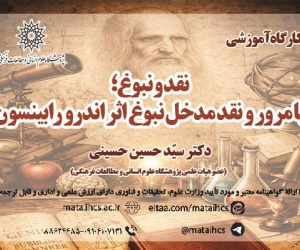A Construction Morphology Approach to the Analysis of Compound Adjectives Made of Sāz (Builder) in Persian (مقاله علمی وزارت علوم)
درجه علمی: نشریه علمی (وزارت علوم)
آرشیو
چکیده
In the present study, we attempted to specify the constructional schemas relevant to the compounds made by the present stem ‘sāz’ in Persian within the framework of the construction morphology (Booij, 2010). To this end, 150 compounds were brought together from numerous sources, such as the Persian Corpus of Bijankhan, Persian novels as well as some Persian websites. Having collected the data, we tabulated and categorized them on the basis of the preverbal elements. Afterwards, a comparison was made, as a result of which it was indicated that there can be a general constructional schema inside which 5 sub-schemas can be placed. Certainly, the broad schema denotes the construction by which a noun (preverbal element) is combined with the verbal element (present stem sāz) to create an adjective that implies the agent of an action, namely the agent of building or making an object. However, there were two exceptions among the whole dataset: a compound in spite of resembling the other compounds regarding its construction denotes the semantic role of patient: dastsāz (handmade), referring to an object which is made by hands as well as the compound ʤāsāz (embedded object), whereas in other compounds, the stem means the agent that builds, creates or makes. Consequently, as might be expected, two broad constructional schemas have been obtained: one relevant to the agents and the other relevant to patients.رویکرد صرف ساخت بنیاد به تحلیل صفت های مرکب ساخته شده از «-ساز» در فارسی
در پژوهش حاضر کوشش شد تا طرحواره های ساخت بنیاد مربوط به واژه های مرکب ساخته شده توسط ستاک حال فعل «ساز» در فارسی را در چارچوب نظریه صرف ساخت بنیاد مشخص کنیم (بوی، 2010). به این منظور، تعداد ۱۵۰ واژه مرکب از منبع های گوناگون از جمله پیکره فارسی بیجن خان، رمان های فارسی و برخی از وبگاه های فارسی گردآوری شد. پس از گردآوری داده ها، آن ها را بر اساس عناصر پیش کلامی جدول بندی و از یک دیگر متمایز کردیم. پس از آن، مقایسه ای انجام شد و در نتیجه نشان داده شد که می توان یک طرحواره کلی ساخت بنیاد داشت که ۵ زیرطرحواره را در درون خود دارد. بی گمان، طرحواره گسترده بیانگر ساختی است که توسط آن یک اسم (عنصر ما قبل فعل) با عنصر فعلی (ستاک ِ حال ِ فعل ِ «ساز») ترکیب می شود و صفتی می سازد که دلالت بر فاعل یک فعل دارد، یعنی عامل ساختن یک شی. با این وجود، در میان همه داده ها دو استثنا وجود داشت: یکی واژه مرکبی که با وجود شباهت به ترکیبات دیگر از نظر ساخت، نقش معنایی کنش پذیر را نشان می دهد: «دست ساز»، اشاره به شیئی که با دست ساخته می شود و همچنین ترکیب «جاساز». (شیء جاسازی شده)، در حالی که در دیگر ترکیبات، ستاک به معنای عاملی است که ایجاد می کند یا می سازد. در نتیجه، همان گونه که انتظار می رود، دو طرحواره ساخت بنیاد گسترده به دست آمده است: یکی مربوط به کنشگر و دیگری مربوط به کنش ور.









